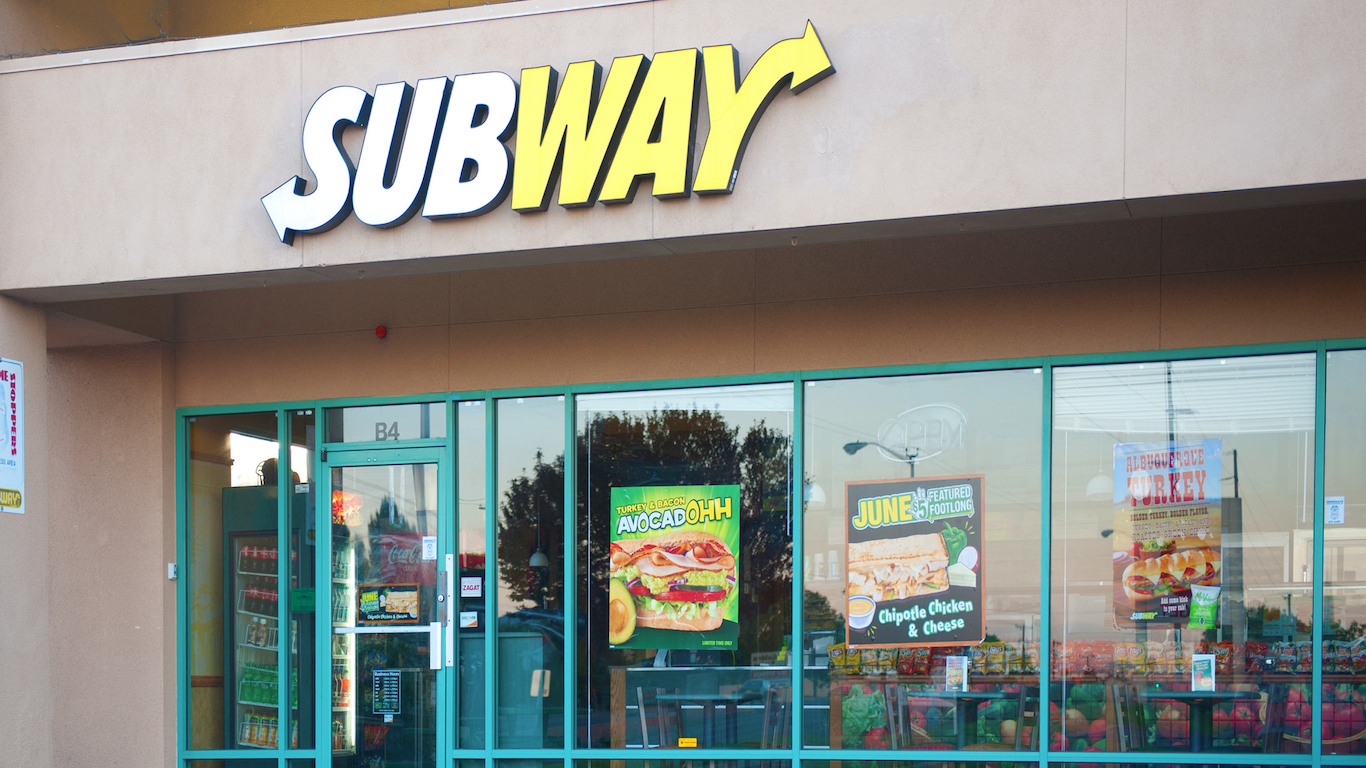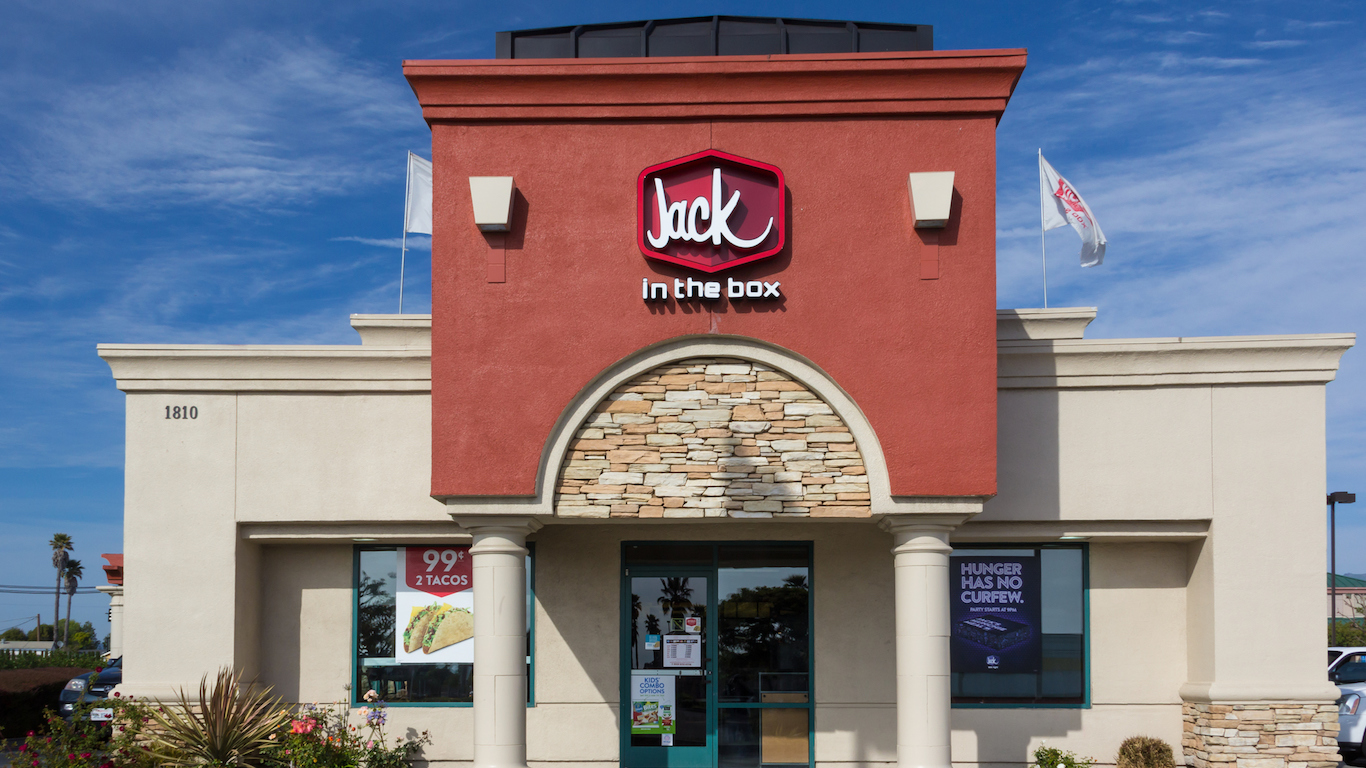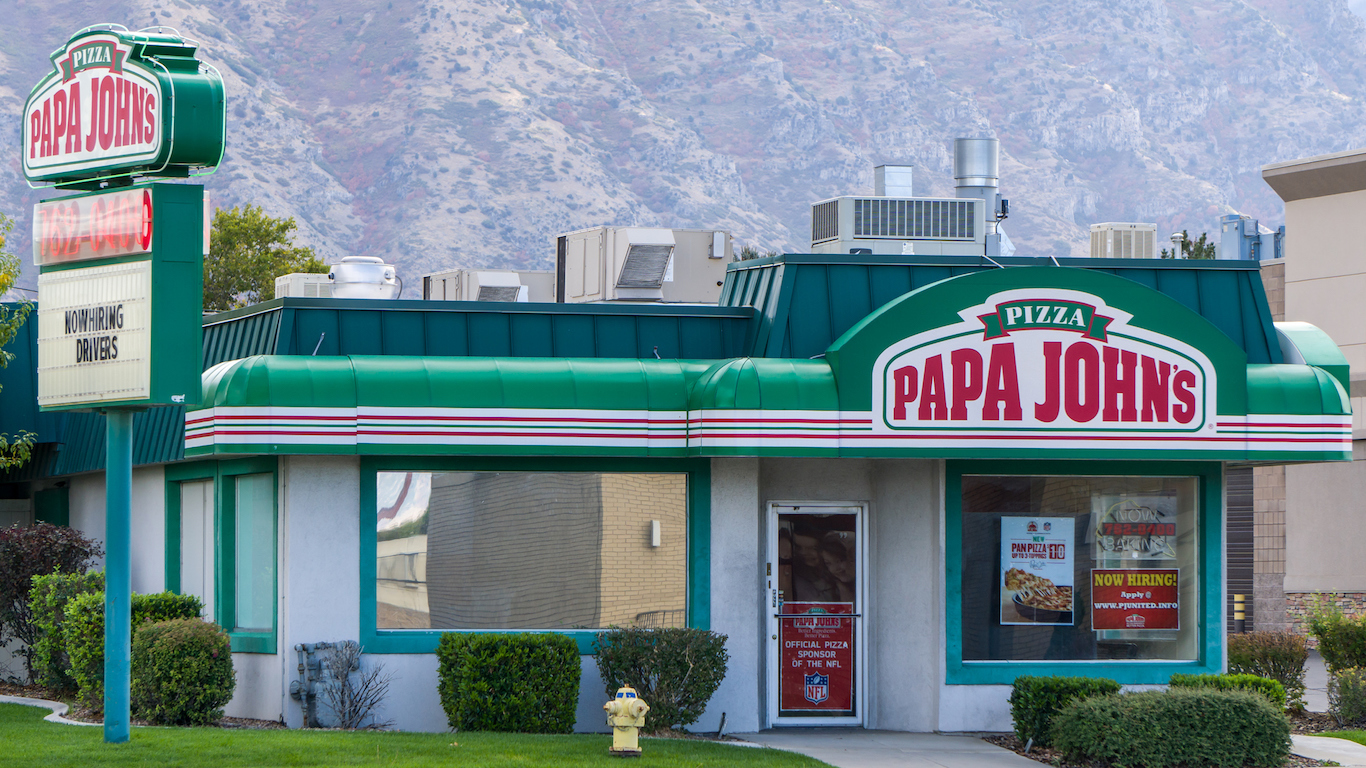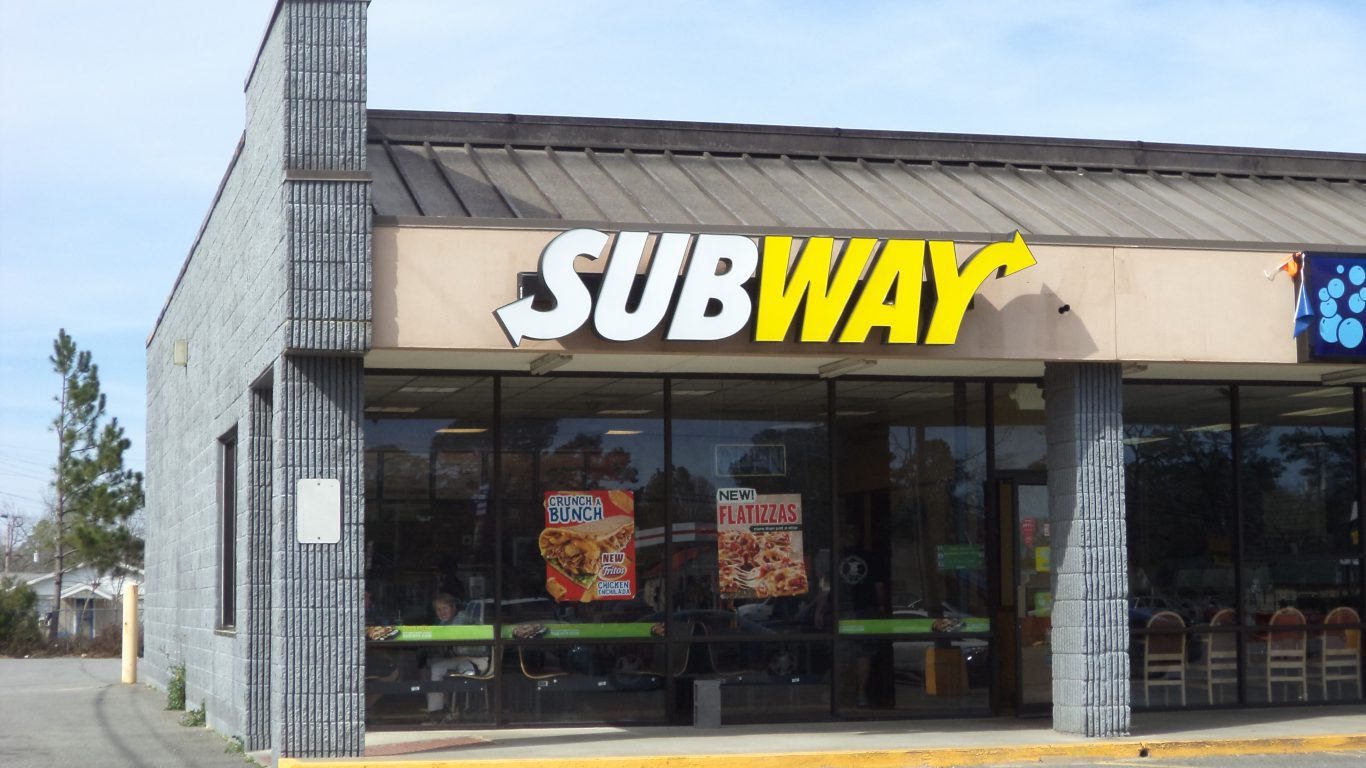Special Report
Fast-Food Chains With the Most Closures in 2018

Published:
Last Updated:

Fast food chain restaurants are a part of the American landscape, both literally and figuratively. Be it a fast food burger joint, a burrito takeout place, or mass-market sandwich shop, chain restaurants have become essential to the way we eat.
In recent years, however, sales at some chains have slowed as palates change and new competitors arise to steal hungry customers. These chains deal with sales downturns by rethinking menus, refocusing expansion strategies, and in some cases closing down units completely.
One major factor contributing to restaurant chains’ sales decline is the evolution of consumer tastes and a growing interest — especially among millennials — in healthier food options than chains typically provide. Food safety scares (like the E. Coli outbreaks that have plagued Chipotle) and supply chain issues undermine customer confidence, too.
Sit-down restaurants seem to have been particularly hard-hit. Having closed 99 locations in 2017, for instance, Applebee’s announced early this year that it planned to shutter another 60 or 80 before Dec. 31. Its sister brand, IHOP, will have closed 30 to 40 restaurants by the end of the year.
Other restaurant categories are affected too. Sonic, which styles itself “America’s favorite drive-in,” has recorded eight straight quarters of sales declines, which its CEO blamed in a second quarter press release on “unfavorable weather” and “continued aggressive discounting by the competition.” Chipotle, which is undergoing a major restructuring, has closed 55 locations this year.
It’s important to note that closing locations can be a beneficial strategy. Oversaturation or changing demographics in some neighborhoods may encourage chains to cut their losses and focus their energies elsewhere. In some cases, companies decide to take advantage of burgeoning overseas opportunities (in the Middle East, for instance) and redirect expansion efforts away from overserved domestic markets. Streamlining operations can make sound business sense — and in any case, some chains that close a number of units annually end up opening even more new ones in the same time span.
24/7 Wall St. has identified three major U.S.-based fast food chains that that have closed more locations in the United States than they opened so far in 2018.

1. Jack in the Box
> 2018 closings: 14 fewer locations in 2018
This 67-year-old California-based burger chain operates more than 2,200 quick service restaurants in 21 states and Guam. However, there are indications that the chain’s prospects may not be all that bright. The chain’s second quarter sales were below industry averages. In March, the company sold its Qdoba Mexican fast-casual subsidiary to a private equity firm for $305 million.
Though Jack in the Box hasn’t closed massive numbers of restaurants, the number of its stores has declined from 2,251 in 2017 to 2,237 this year, while other major chains have added dozens — sometimes hundreds — of locations.

2. Papa John’s
> 2018 closings: Net decline of 85 stores in North America in 2018
With more than 5,000 locations in 45 countries and territories around the world, this Kentucky-based pizza chain would seem to be going strong. However, Papa John’s share price fell over 30% in a year following founder and former CEO John Schnatter’s feud with the NFL over the national anthem kneeling controversy, for which Papa John’s was the official pizza sponsor, and accusations that he’d used a racial slur and fostered a corporate culture that allowed sexual harassment.
Schnatter stepped down from the CEO position late last year, but according to industry analyst Chris O’Cull, speaking to CNN Business, the chain was in a slump even before the controversy. In the first nine months of 2018, Papa John’s closed 55 more stores than it opened in North America.

3. Subway
> 2018 closings: ~500 closing in North America
Feeling the effects of overexpansion, changing food trends, and an apparent lack of confidence in its CEO, Subway announced this spring that it was closing as many as 500 locations this year. The footlong sandwich pioneer had already shuttered 909 restaurants in 2017, citing a 25% drop in store traffic.
In an effort to counteract negative trends, the chain — which still operates more units than any other location by far, with about 44,000 internationally, compared with a mere 14,000 for McDonald’s, is revamping its restaurants, adding more comfortable seating, Wi-Fi, and self-service kiosks. While it has closed a large number of stores in the U.S., Subway has shifted its primary expansion efforts to developing countries around the globe.
Thank you for reading! Have some feedback for us?
Contact the 24/7 Wall St. editorial team.